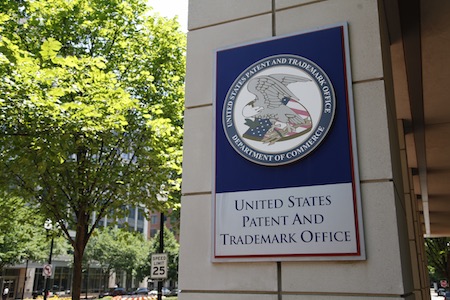“Although the guidance is intended for IPR proceedings at the Board, practitioners should take care to avoid statements that can be construed as admissions of prior art when preparing patent applications as well as prosecuting applications before the USPTO.”
 On August 18, 2020, the USPTO issued a guidance memorandum on the treatment of applicant statements in the challenged patent in inter partes review (IPR) proceedings under Section 311, which addresses the use of applicant statements as Applicant Admitted Prior Art (AAPA).
On August 18, 2020, the USPTO issued a guidance memorandum on the treatment of applicant statements in the challenged patent in inter partes review (IPR) proceedings under Section 311, which addresses the use of applicant statements as Applicant Admitted Prior Art (AAPA).
When an IPR is filed, the basis of that IPR must be prior art consisting of either a patent or printed publication. An interesting situation arises when the disclosure of the challenged patent itself admits or allegedly admits certain material as prior art. This situation has presented itself to the Patent Trial and Appeal Board (Board) on a number of occasions and has received inconsistent treatment. The purpose of this memorandum is to clarify that an applicant’s own statements in the challenged patent cannot serve as the basis for instituting an IPR. But the use of AAPA is still available as evidence the Board may consider for more limited purposes.
Clarifying Confusion Around Section 311(b)
The confusion stems from inconsistent treatment of 35 U.S.C § 311(b). Under Section 311(b), IPR’s may only be instituted “on the basis of prior art consisting of patents or printed publications.” Some Board decisions felt AAPA satisfied Section 311(b) because it was both “prior art” and located in a “patent.” This position ignores the fact that a patent cannot be prior art unto itself. The correction here is that a patent used as the basis for an IPR must be a prior art patent, not the challenged patent itself.
While AAPA cannot provide the sole basis for challenging a patent in an IPR, AAPA can still serve a purpose in an IPR proceeding. That is, AAPA can provide insight into the state of knowledge for a person having ordinary skill in the art. The Federal Circuit, in Koninklijke Phillips v. Google, held that the AAPA cannot be used to fill in claim elements in a Section 103 analysis but could be used as evidence of the general knowledge of those with ordinary skill in the art. See 948 F.3d 1330, 1337-1339 (Fed. Cir. 2020).
The guidance memorandum proceeds to provide three examples of how evidence of general knowledge of a person having ordinary skill can be used:
- supply missing claim limitations that were generally known in the art prior to the invention (for pre-AIA patents) or the effective filing date of the claimed invention (for post-AIA patents);
- support a motivation to combine particular disclosures; or
- demonstrate the knowledge of the ordinarily-skilled artisan at the time of the invention (for pre-AIA patents) or the effective filing date of the claimed invention (for post-AIA patents) for any other purpose related to patentability.
The main inquiry in a situation involving AAPA ultimately becomes whether the petitioner uses the AAPA statements in the specification as evidence of the general knowledge of a person of ordinary skill in the art.
Phrases to Avoid
Although the guidance is intended for IPR proceedings at the Board, practitioners should take care to avoid statements that can be construed as admissions of prior art when preparing patent applications as well as prosecuting applications before the USPTO. The memorandum provides several example phrases that can serve as an alert for AAPA:
-
- “It is well known that…”
- “It is well understood that…”
- “One of skill in the art would readily understand that…”
- Describing technology as “conventional” or “well known”
By avoiding phrases like the above, a patent will be less likely to be viewed as providing one of the three examples of how applicant’s own statements can be used against the patent.
Lessons from 101
Lastly, as previously evidenced by the Federal Circuit’s treatment of the USPTO’s 35 U.S.C. § 101 guidance on subject matter eligibility, the Federal Circuit will most likely not be bound by the USPTO guidance on AAPA. It will be interesting to see how the Federal Circuit treats decisions by the Board that rely on the AAPA guidance.

![[IPWatchdog Logo]](https://ipwatchdog.com/wp-content/themes/IPWatchdog%20-%202023/assets/images/temp/logo-small@2x.png)

![[Advertisement]](https://ipwatchdog.com/wp-content/uploads/2024/04/UnitedLex-May-2-2024-sidebar-700x500-1.jpg)
![[Advertisement]](https://ipwatchdog.com/wp-content/uploads/2024/04/Artificial-Intelligence-2024-REPLAY-sidebar-700x500-corrected.jpg)
![[Advertisement]](https://ipwatchdog.com/wp-content/uploads/2024/04/Patent-Litigation-Masters-2024-sidebar-700x500-1.jpg)

![[Advertisement]](https://ipwatchdog.com/wp-content/uploads/2021/12/WEBINAR-336-x-280-px.png)
![[Advertisement]](https://ipwatchdog.com/wp-content/uploads/2021/12/2021-Patent-Practice-on-Demand-recorded-Feb-2021-336-x-280.jpg)
![[Advertisement]](https://ipwatchdog.com/wp-content/uploads/2021/12/Ad-4-The-Invent-Patent-System™.png)






Join the Discussion
6 comments so far.
Amit Tailor
October 21, 2020 10:22 pmIf one should not believe what a patent states under background, why should one be forced to believe what is stated under the description of the invention? Why the public should believe that one may lie under one section and will never lie under the other. If we go by statute, if a patent is granted for an invention, the public does not require to ‘test’ whether it would work or not because it is presumed that the description enables it. But going by this memorandum, public needs to ‘test’ whether something ‘admitted’ as ‘prior’ is actually prior or not. Isn’t it skewed position?
Amit Tailor
October 21, 2020 10:10 pm@Anon, I am not trying to over- or under- read anything. I am just trying to put forward a view. Opposite views were taken by different benches, was the very reason for issuance of this memorandum. I have only stated that there is no clear guidance by the office why they believe “for all purpose” is not consistent with “the later-enacted language of § 311 (b)” – nothing more and nothing less.
Anon
October 21, 2020 08:07 amAmit, you appear to over-read the “for all purposes,” and should note that the statement is not a blanket statement.
For example, such a statement is not binding on others.
If it were, one could destroy all actual innovation by merely filing an application full of lies stating that items are prior art that have not been invented yet.
Amit Tailor
October 21, 2020 12:06 am“At footnote 2, the memorandum itself acknowledges, citing In re Nomiya, 509 F.2d 566,571 n.5 (CCPA 1975), that the admissions are “prior art for all purposes” but immediately thereafter concludes that it did not address the later-enacted language of § 311 (b). It is not clear why the office believes so, because no reasoning has been provided by the office in support of such conclusion. When something is declared as admissible as prior-art for all purposes, why it is not for the purpose of institution of IPR (as a printed publication)?” – https://www.linkedin.com/pulse/applicant-admitted-prior-art-basis-institution-ipr-amit-tailor/
“a statement by an applicant, whether in the application or in other papers submitted during prosecution, that certain matter is ‘prior art’ to him, is an admission that that matter is prior art for all purposes, whether or not a basis in [Section] 102 can be found for its use as prior art. “
Pro Say
October 20, 2020 06:54 pm+1 David
David Lewis
October 20, 2020 03:38 pmFrom pilisophical point of view, if the point of patent law is to encourage disclosure of inventions, don’t allow use the disclosure against that patent owner. Also, these “it is well known” type clauses are at best just the impression of the inventor. It is unlikely that the inventor or patent writer in fact took a survey, even a statistically relevant sample size of randomized cross section or a diverse cross section all those that are of ordinary skill in the art to figure out what is and what is not in fact well known in the art. It seem to me that it is unfortunate for at least the unaware patent owners (e.g., for pro se inventors) that such statements are often given such a high weight in our patent legal system.